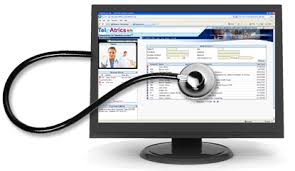

Telepsych: New Tech, New Payment Models.
Earlier this year, the Centers for Medicare and Medicaid proposed adding codes to cover telepsych services including routine visits, consultations and psychiatric assessments completed via telehealth services. The field of telepsychiatry has become a hot zone for start-ups, which are eager to develop software that boasts usability, confidentiality and smooth interfaces to incorporate video, sound and instant messaging between patients and providers. The same could be said of any telehealth programs – but perhaps the foray into psychiatry via computer is the most interesting of all.
CMS has proposed setting up reimbursement schedules for telepsychiatry services which would encourage providers to utilize this technology to expand their connectivity to patients – especially those who are homebound or in rural areas.
Telehealth & Telepsych: Innovation Needed
The call for telehealth innovation has already been met with several programs, and the race for the premiere telepsychiatry program is well underway. Start ups like 1DocWay have incorporated ease of use, confidentiality, monitoring metrics and cost-efficacy to create a competitive program for providers. It might seem counterintuitive to replace the highly personal nature of a psychiatrist’s office (and couch) with a computer, a video camera and a microphone, but those who are building the technology bring up a marvelous point: for some patients, it might actually be more comfortable.
For many, the decision to see a therapist might present problems socially, economically or strategically: they might feel embarrassed, have trouble affording the service and / or they may not be able to schedule the sessions around their already tight schedule. For any of these reasons, and more, telepsych is an appealing alternative.
Telepsych: Developers Are Great Allies for Providers
For developers, creating lasting relationships with providers will be the crux of success for their telehealth programs. Medicine, as a practice, certainly isn’t moving away from technology and those who are prepared to embrace it and find a place for it within their practice will fare better than their competitors. Developers know this, and they are excellent allies for physicians and healthcare systems to have – no one has an ear to the ground in technology like software developers, and they will be among the first to know where the market is headed. Over the next decade, it will be crucial for healthcare systems to stay abreast of market developments, and perhaps even more so for telepsychiatry.
Telepsych: Meeting The Needs of Underserved Populations
In the United States, an estimated 3.8 million people live with untreated mental illness. This is likely a gross underestimate. We often don’t take the mental health of our friends and neighbors into consideration until some tragedy befalls our community – at which time it is often too late for intervention. Could telepsychiatry bridge the gap and reach out to these individuals?
For many patients, barriers to receiving mental health treatment – time, travel, cost and in many cases, the specific nature of their mental illness (agoraphobia, for example)- may be mitigated by telepsych technology. A video conference appointment could be done at a predetermined time, just like a regular appointment, but the patient wouldn’t need to drive anywhere. They could have the session right from their own home. If the patient is disabled, this could be the difference between seeking care and not seeking care. Even for patients who can leave the house and make the trek across town to a therapist’s office, it doesn’t necessarily mean that the providers within a certain demographic area will be the right fit for the need of the patient; telehealth opens up a whole new world of providers for patients. And, a whole world of patients for providers.
If the availability of various psychiatrists, particularly specialists, opens up to patients then they could receive more specialized treatment. Seeking second opinions for care recommendations and diagnoses could make a vital difference to a patient facing long term treatment, hospitalization or inpatient rehabilitation. With the cost of such services soaring, it’s reasonable that a patient would want to know they had sought counsel from multiple experts, not just taken the word of a single source at face value.
Telepsych Shows Promise
Telepsych technology has shown promise in recent studies. One area that does need to be addressed, as telepsych takes off, is one that is likewise of concern to physicians who may want to “practice” telehealth across state lines: how will licensure need to be augmented so that practitioners can “see” patients anywhere, anytime for a consultation via the web?
Truth be told, telehealth technology as a whole has been around for more than a decade, but only in the last few years has it become more of a reality. With changes to the payment structure in U.S. healthcare, coverage for telepsych services will no doubt continue to be a hot topic of conversation – your webcam might not completely replace the therapist’s couch, but over the next few years you might have the option of a session via your own couch.